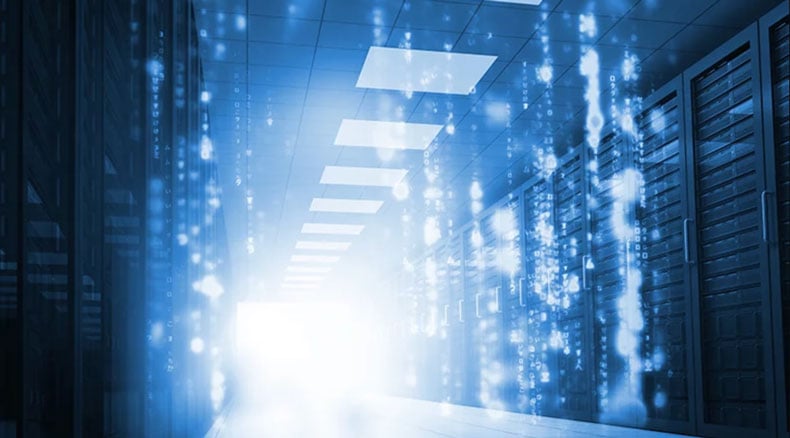
In today’s data-driven world, server rooms and data centers are the backbone of digital operations. They support mission-critical systems such as ERP, CRM, and financial platforms, ensuring real-time access to data and services for employees, customers, and third parties. They also enable digital transformation through the adoption of AI, big data analytics, and remote work platforms. To maintain optimal functionality, preventing data center downtime is essential.
The High Cost of Downtime
Data center outages can have serious consequences. According to Gartner, the average cost of downtime is $5,600 per minute. Outages can last from a few seconds to several hours, and any unplanned interruption—no matter how brief—can lead to lost revenue, customers and brand loyalty.
That’s why it's critical for businesses to implement systems that proactively prevent downtime and continuously monitor equipment status and environmental conditions. Even if you already use a Data Center Infrastructure Management (DCIM) system, having a redundant system in place ensures immediate notifications for alarms related to Uninterruptible Power Supplies (UPS), Power Distribution Units (PDU) and other essential equipment.
Limitations of Manual Monitoring
While some facilities still rely on manual monitoring, this approach is labor-intensive, costly, and prone to human error. Staff can’t realistically monitor all systems around the clock, which means potential issues could go unnoticed. Implementing automated remote monitoring systems is a far more efficient and reliable approach to maximizing uptime and protecting valuable infrastructure.
Below are some of the most common causes of data center downtime—and the strategies you can use to prevent them.
Common Causes of Downtime and How to Prevent Them
UPS System Failure
Power failures are inevitable especially with unpredictable weather events. Most data centers rely on UPS systems to maintain power during transitions to backup generators. But if the UPS fails, even a few seconds of downtime can result in data loss or hardware damage. That's why it’s crucial to have a backup UPS and to test it regularly to ensure optimal performance.
Cybercrime
Cybercrime remains the fastest-growing cause of data center disruptions. Staying updated on cybersecurity best practices is essential. All employees should undergo background checks and sign confidentiality and security agreements. Passwords should be complex and rotated every 60–90 days. Access to sensitive servers should be limited strictly to personnel who need it for their role.
Power and Equipment Failure
Power and equipment issues can arise from both natural and human causes. Continuous monitoring of PDUs is vital, as these units distribute power across server racks. Each rack's power outlet strip should also monitor load levels. Built-in PDU alarms can activate output relays to identify affected areas. Your DCIM system should flag these issues—but for added assurance, remote monitoring can serve as a secondary alert system.
Environmental Threats
Physical dangers to data centers can often go unnoticed, yet they can severely damage both the equipment and the information stored within it. Issues like water leaks, temperature spikes, high humidity and poor airflow can compromise equipment and data integrity. Remote monitoring systems detect and report these conditions in real time, even when staff are not on-site, helping facility managers maintain ideal operating conditions. The systems track server’s status and sends notifications if any conditions fall outside predetermined ranges.
Remote Monitoring Systems Help Prevent Downtime
To tackle these challenges, many data center and facility managers are turning to remote monitoring systems that detect threats early and help prevent data center downtime. These data center monitoring systems sense changes in vibration, pressure, airflow, humidity, temperature and more—sending real-time alerts so personnel can respond before problems escalate.
The ideal monitoring system will depend on your specific needs, including sensor types, alarm configuration, and placement strategy.
Check out our blog on what to consider when choosing a data center monitoring system.)
Cloud-Based Monitoring with Stratus EMS
Sensaphone’s Stratus EMS remote monitoring system is a powerful, cloud-based remote monitoring solution tailored for data centers. It provides real-time insight into equipment performance and environmental conditions—accessible from your smartphone, tablet or computer.
Modern data centers are equipped with micro-controlled systems and integrated sensors that control and monitor everything from UPS and PDUs to HVAC systems. The Stratus EMS aggregates this data into a unified platform and supports both Modbus RTU/485 and Modbus TCP protocols. It can read data from various sources, including Intermediate Distribution Frames (IDFs), UPS systems, and building automation systems.
Key Capabilities
The Stratus EMS can monitor up to 64 Modbus values and includes 12 digital/analog inputs for connecting external sensors such as:
- Vibration
- Differential pressure
- Leak detection
- Airflow
- Temperature (–109°F to 168°F / –85°C to 76°C)
- Humidity
- Power fluctuations
Each input features a selectable 24 VDC source, simplifying installation for sensors requiring an operating voltage.
Real-Time Alerts and Notifications
To prevent data center downtime, the Stratus EMS instantly alerts designated staff when monitored values fall outside acceptable ranges without adding additional wiring and sensors. Notifications can be delivered via text message, email, or phone call. The system continuously communicates with the Sensaphone cloud to confirm its operational status, and any loss of connection triggers an immediate alert.
Being cloud-based means you can monitor your facility anytime, from anywhere. The system supports multiple protocols—JSON, HTTPS, POST, cURL, and REST web services—and includes a free mobile app for remote access and system updates. All monitoring data is stored in the cloud, eliminating the risk of overwriting and simplifying data retrieval.
For on-site visibility, an optional rack-mounted LCD panel displays live sensor readings. Facilities that can’t share a network with monitored devices can opt for an external cellular kit for standalone connectivity.
For server rooms lacking a DCIM system, the Stratus EMS is a cost-effective, all-in-one monitoring solution covering the entire data center environment, including devices like UPS and PDU.
Be Practive, Not Reactive
Data center downtime can be expensive and damaging—but it’s also largely preventable. By implementing industry best practices and investing in a reliable remote monitoring solution like the Stratus EMS, you’ll gain peace of mind knowing your equipment is protected and your team is equipped to respond to threats in real time.
Sensaphone offers a full range of remote monitoring devices designed to help prevent data center downtime. Don’t wait for the next outage—be proactive and protect your critical infrastructure today. Contact a Sensaphone expert for more information or to find a solution that fits your specific needs.








